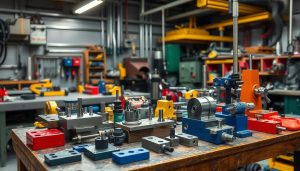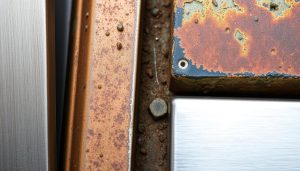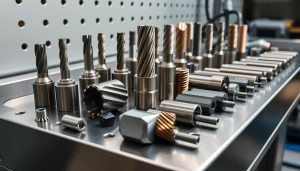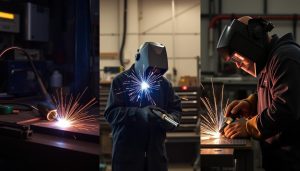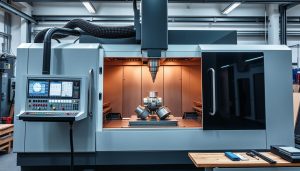In the world of precision manufacturing, CNC routers and laser cutting stand out. But which one is right for your next project? The answer depends on knowing the differences between these advanced tools. Let’s explore what makes them unique and how to use their strengths to get the best results.
What is a CNC Router?
A CNC (Computer Numerical Control) router is a cutting machine that uses computer tools to shape materials. It’s more precise and automated than hand-operated routers. This makes it key in woodworking, 3D carving, and removing materials.
How CNC Routers Work
A CNC router has a rotating cutting tool, called a router bit, controlled by a computer. The computer program guides the tool to make precise cuts. The tool moves in the X, Y, and Z axes to create detailed designs.
Benefits: Depth and Material Versatility
CNC routers can work with many materials like wood, plastics, metals, and soft composites. They can make deep cuts and complex shapes. This makes them useful for many tasks, from making furniture to creating custom parts.
| Material | Depth Capability |
|---|---|
| Wood | Up to 3 inches |
| Plastics | Up to 2 inches |
| Metals | Up to 1 inch |
| Composites | Up to 1.5 inches |
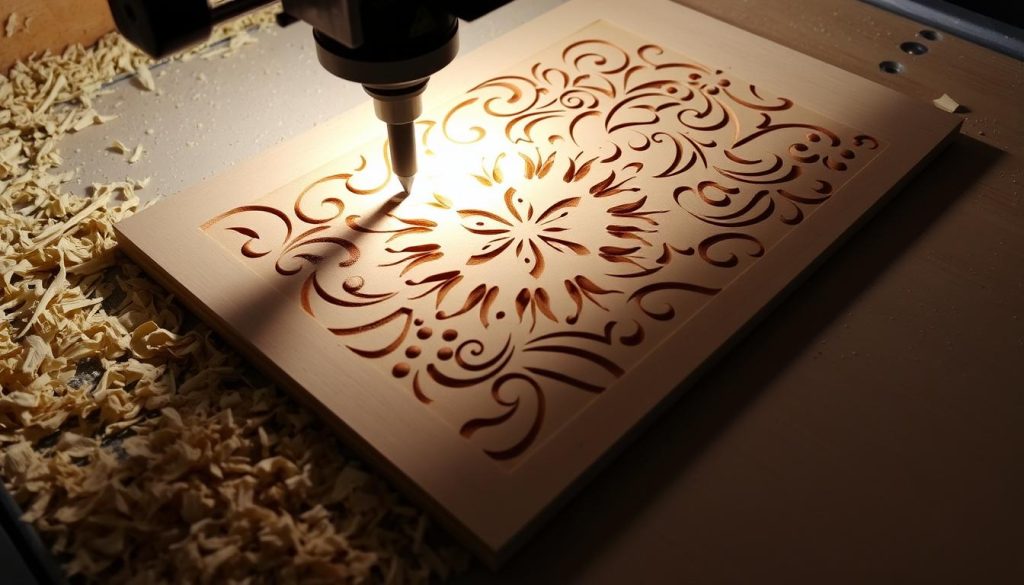
“CNC routers have revolutionized the way we approach material cutting and shaping, offering unparalleled precision and versatility.”
What is Laser Cutting?
Laser cutting is a precise way to cut through many materials. It uses a focused laser beam to melt or vaporize the material. This method creates detailed designs quickly and accurately.
How Laser Cutters Operate
A laser cutter has a strong laser, usually CO2 or fiber. This laser emits a focused beam of light. A computer controls the laser to cut out designs with great precision.
The laser’s heat melts or vaporizes the material. This creates a narrow cut, sometimes just a few hundredths of a millimeter wide.
Advantages: Precision and Speed
- Laser cutting is very precise. It can make detailed designs that other methods can’t.
- It’s also fast, making it great for making lots of items quickly.
- Many materials can be cut, like metals, plastics, and wood. This means less waste and less damage to the material.
Laser cutting is popular in many fields, like aerospace and electronics. As laser technology gets better, it will open up even more possibilities. This is good news for designers, engineers, and manufacturers.
Key Differences Between CNC Routers and Laser Cutting
Choosing between a CNC router and laser cutting affects your final product. These methods vary in how they cut, what materials they work with, and the finish they produce. Knowing these differences is key to picking the best method for your project.
Cutting Mechanism: Friction vs. Heat
CNC routers use a spinning tool to cut through friction. Laser cutters, however, use intense heat to melt or vaporize material. This affects the material thickness, cutting precision, and surface quality of your product.
Suitable Materials and Thickness Ranges
CNC routers work well with many materials like wood, plastics, and soft metals. They can handle thicker material thickness up to several inches. Laser cutters, though, are best for thinner materials like sheet metal, acrylic, and fabrics. They offer great cutting precision.
Surface Finish and Aesthetic Capabilities
The cutting method also influences the surface quality and look of your product. CNC routers leave a slightly rougher finish. Laser cutting, however, produces a smoother, more even surface. This makes laser cutting ideal for high-quality surface quality and detailed manufacturing processes.
It’s crucial to understand the differences between CNC routers and laser cutting. This knowledge helps you choose the right material thickness, cutting precision, surface quality, and manufacturing processes for your project. By considering these factors, you can make a well-informed decision and achieve the desired outcome.
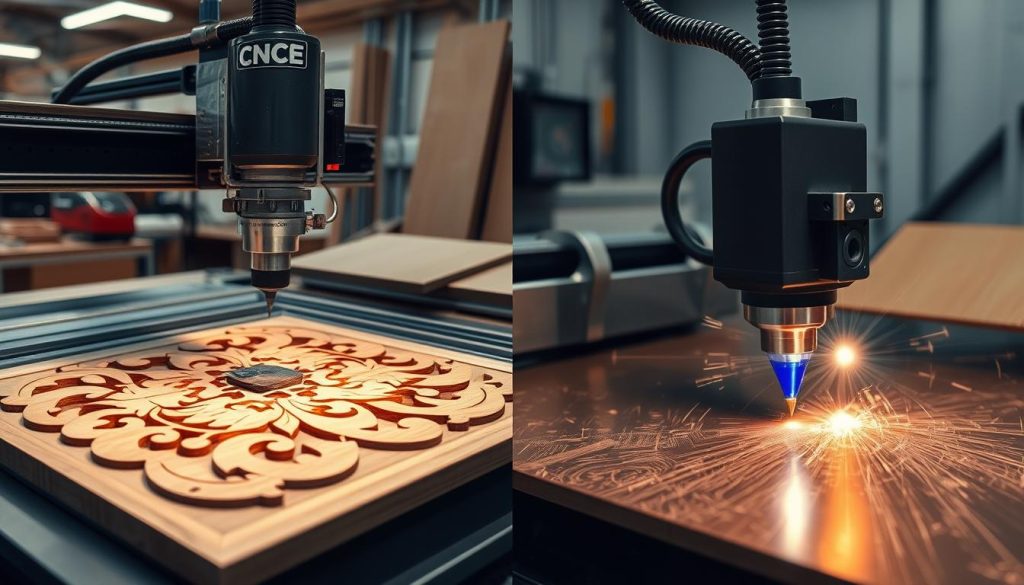
When to Choose CNC Router vs Laser Cutting
Both CNC routers and laser cutters are great for precision cutting. The right choice depends on the project, materials, design, and how fast you need it.
Best Use Cases for Routers: Wood and Thick Materials
CNC routers work well with wood, plastics, and soft metals. They’re perfect for thick materials like furniture and architectural pieces. They’re also cheaper for big projects.
Ideal Applications for Laser Cutting: Detailed Designs and Metals
Laser cutters are best for detailed designs and thin materials like metals. They cut fast and accurately, great for complex parts and prototypes. They focus on looks and surface quality.
| Criteria | CNC Router | Laser Cutting |
|---|---|---|
| Cutting Mechanism | Friction-based cutting with a rotating tool | Heat-based cutting with a focused laser beam |
| Suitable Materials | Wood, plastics, soft metals | Thin sheet metals, acrylic, paper, fabric |
| Material Thickness | Suitable for thicker materials | Ideal for thin, precise materials |
| Surface Finish | Rougher surface finish | Smoother, more precise surface finish |
Knowing what CNC routers and laser cutters do best helps businesses choose the right tool. This ensures they meet their project requirements, material selection, design complexity, and production efficiency needs.
Shixinproto’s Cutting Services
At Shixinproto, we offer a wide range of professional cutting services. Our team is ready to help with everything from laser cutting to CNC routing. We focus on meeting your custom manufacturing and prototyping needs.
Our facilities and equipment are top-notch. We can handle many industrial tasks with great accuracy and speed. Whether it’s metal, wood, or plastic, we help you choose the best method for your project.
We know your business depends on product quality. That’s why we aim for the best service and detail. Whether you’re small or big, we’re here to help bring your ideas to life. We’re committed to making your products stand out.
